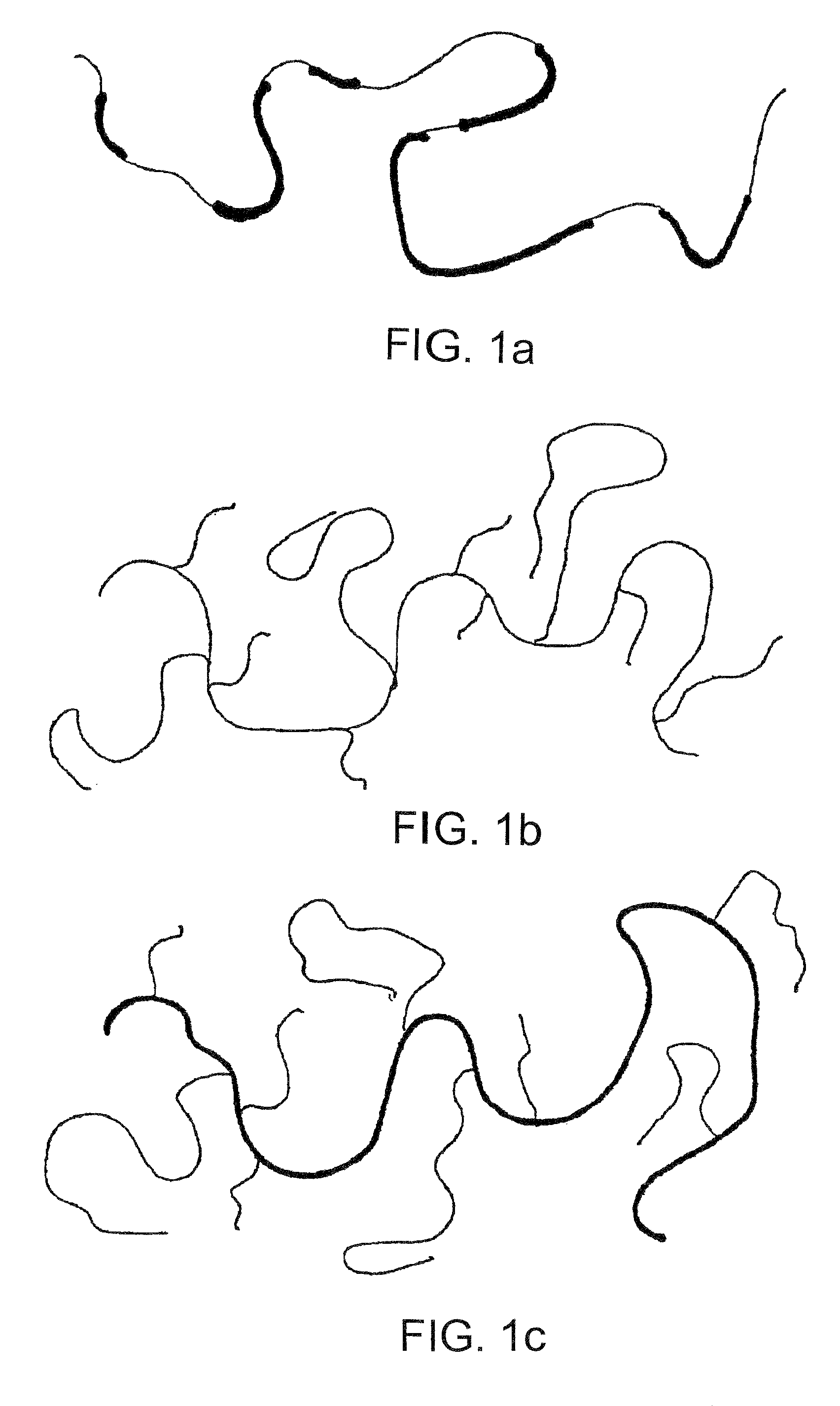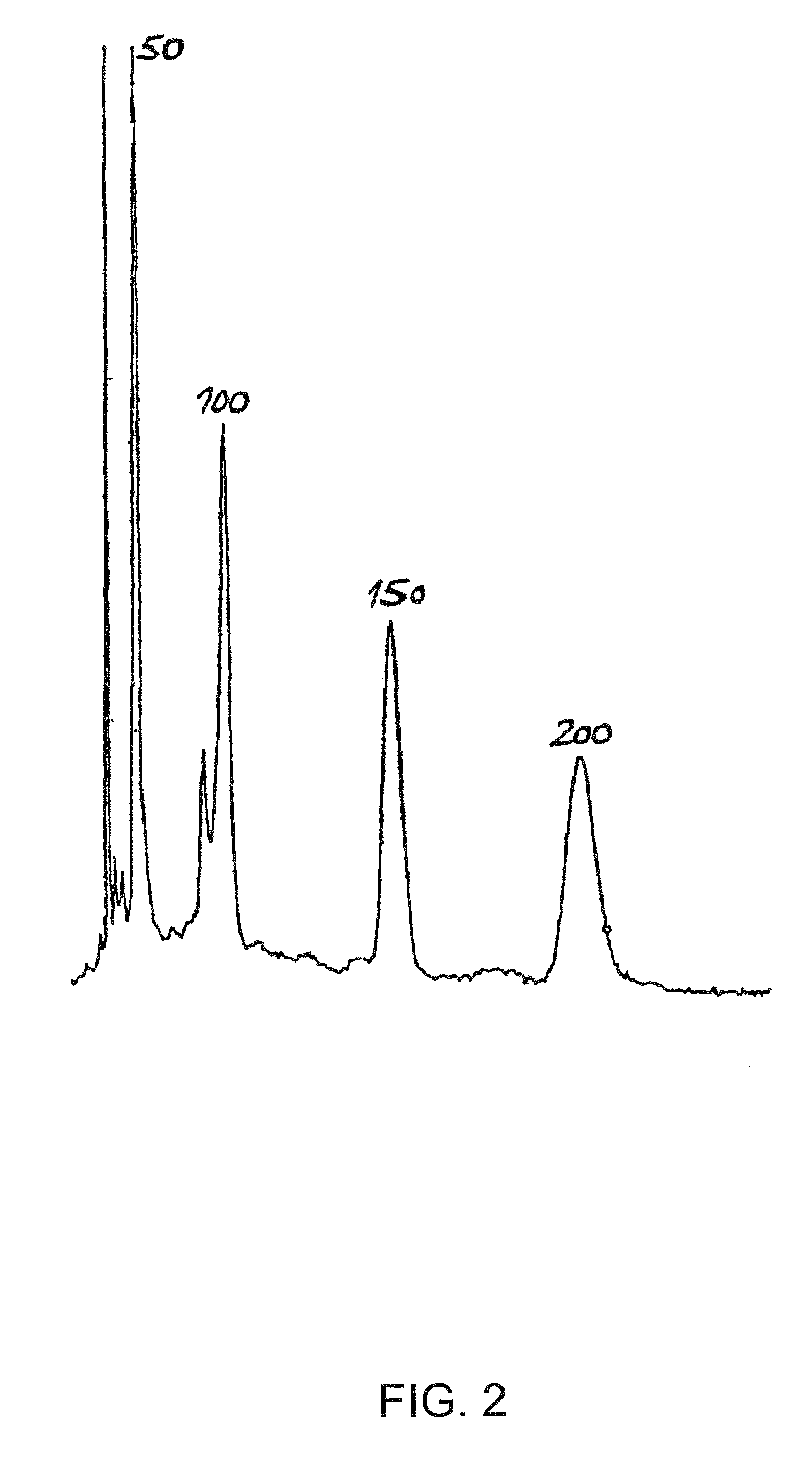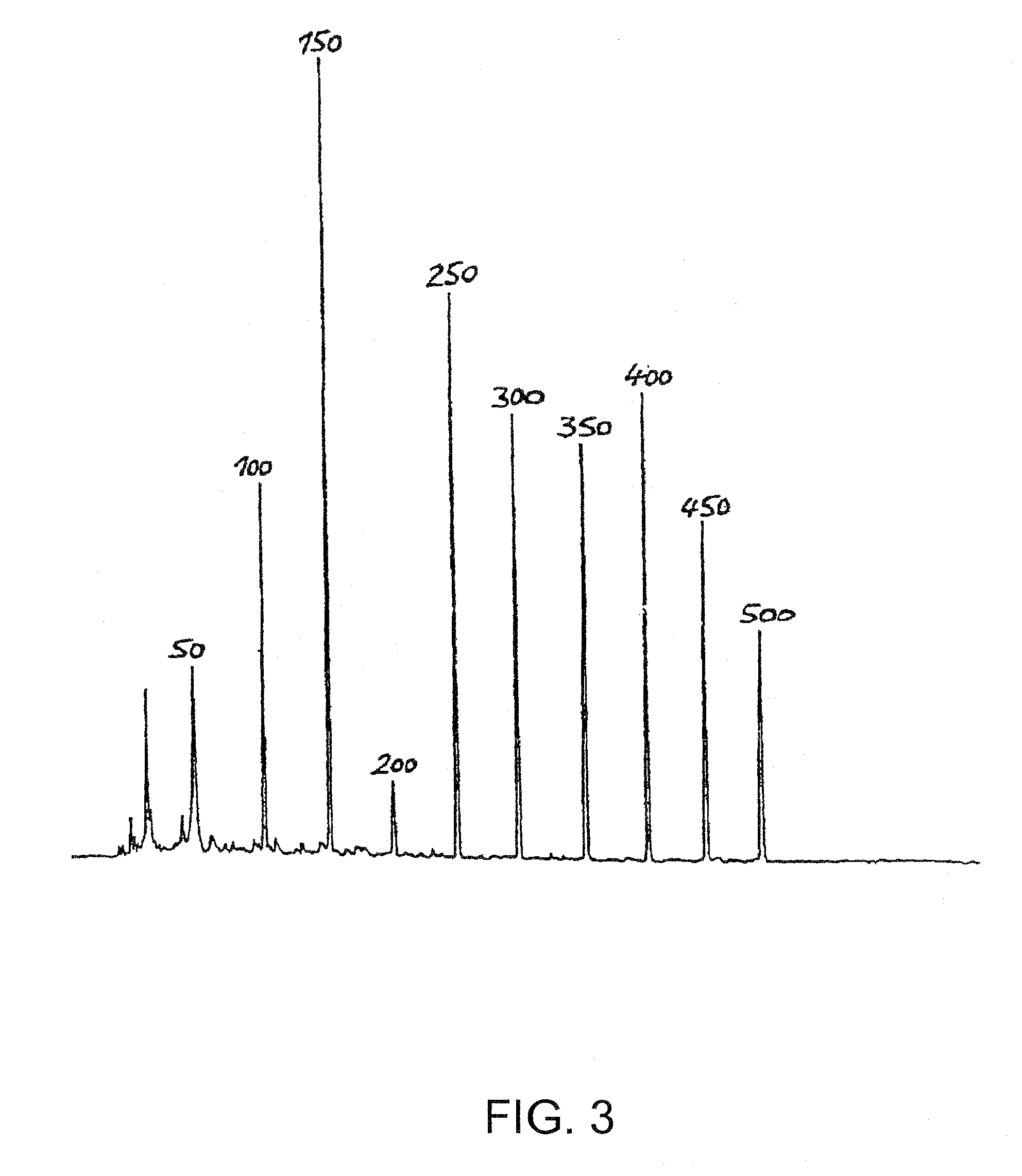Non-thermosensitive medium for analyzing species in a channel and for minimizing adsorption and/or electroosomosic phenomena
a non-thermosensitive medium and species technology, applied in the direction of film/foil adhesives, peptides, liquid/fluent solid measurements, etc., can solve the problems of poor repulsion, limited structure types, poor performance qualities of dna sequencing, etc., and achieve good repulsion
- Summary
- Abstract
- Description
- Claims
- Application Information
AI Technical Summary
Benefits of technology
Problems solved by technology
Method used
Image
Examples
example 1
[0186]Preparation of a Functionalized PDMA Macromonomer with a molecular mass in the region of 10,000, for the preparation of copolymers in accordance with the invention.
[0187]Polymerization of PDMA
[0188]The free-radical polymerization of N,N-dimethylacrylamide (DMA) is performed in pure water. The initiator is a redox couple for which the oxidizing agent is potassium persulfate K2S2O2 (KPS) and the reducing agent is aminoethanethiol AET.HCl. The initiation reaction is:
K2S2O2+2C1-, NH3-CH2CH2-SH→2KHSO4+2C1-, HN3+-CH2CH2-S+
[0189]AET.HC1 also acts as transfer agent, which allows the chain length to be controlled.
[0190]Procedure
[0191]0.18 mol of DMA and 200 ml of water are placed in a 500 ml three-necked flask on which is mounted a condenser, and equipped with a nitrogen inlet device. The mixture is then stirred and heated to 29° C. with a water bath. Sparging with nitrogen is commenced. After 45 minutes, 0.61 g of AET.HC1 (0.0054 mol) predissolved in 20 ml of water is added, followed ...
example 2
[0204]Preparation of a copolymer PCAN-PDMA)-1 with an acrylamide skeleton and PDMA grafts, of molecular mass 1,500 kdalton.
[0205]The copolymerization of amino PDMA (0.4 g) and of acrylamide (2.8 g) is performed for 4 hours in 50 ml of water at room temperature, while degassing vigorously with argon. The initiator used is the redox couple of ammonium persulfate ((NH4)2S2O8) [0.075 mol % of the amount of monomers] / sodium metabisulfite (Na2S2O5) (0.0225 mol % of the amount of monomers). The resulting copolymer is purified by precipitation from acetone and dried under vacuum. Its molecular mass is 1,500 kdalton, and its polydispersity Mw / Mn is about 2. The degree of incorporation of macromonomer, measured by proton NMR, is about 6%, which corresponds to an average number of side branches on the skeleton of about 6.
[0206]On account of the free-radical polymerization method used, the macromonomers constituting the side chains are incorporated into the polymer chain at random positions det...
example 3
[0207]Separation properties obtained for single-stranded DNA (50-500 bp sizer, Pharmacia Biotech) at 50° C. in an ABI 310 machine (Perkin-Elmer), in a 100 mM Na TAPS, 2 mM EDTA, 7 M urea buffer, in various separation media. It is observed visually (FIG. 4) and more quantitatively by means of the resolution measurements (FIG. 5), that the separating medium according to the invention P(AM-PDMA)-2 improves the resolution relative to the same polymer skeleton not bearing side branches (PAM, FIGS. 2 and 5), but also relative to a commercial product based on linear PDMA (POP6, FIGS. 3 and 5). The separation time is also reduced, which is an additional advantage of the media according to the invention. It thus appears, surprisingly but beneficially, that this polymer according to the invention which comprises a large fraction of acrylamide, and a smaller fraction of PDMA, has, on account of the particular arrangement of said fractions and of the presence of junction points that characteriz...
PUM
| Property | Measurement | Unit |
|---|---|---|
| polydispersity | aaaaa | aaaaa |
| temperature | aaaaa | aaaaa |
| temperature | aaaaa | aaaaa |
Abstract
Description
Claims
Application Information
 Login to View More
Login to View More - R&D
- Intellectual Property
- Life Sciences
- Materials
- Tech Scout
- Unparalleled Data Quality
- Higher Quality Content
- 60% Fewer Hallucinations
Browse by: Latest US Patents, China's latest patents, Technical Efficacy Thesaurus, Application Domain, Technology Topic, Popular Technical Reports.
© 2025 PatSnap. All rights reserved.Legal|Privacy policy|Modern Slavery Act Transparency Statement|Sitemap|About US| Contact US: help@patsnap.com



